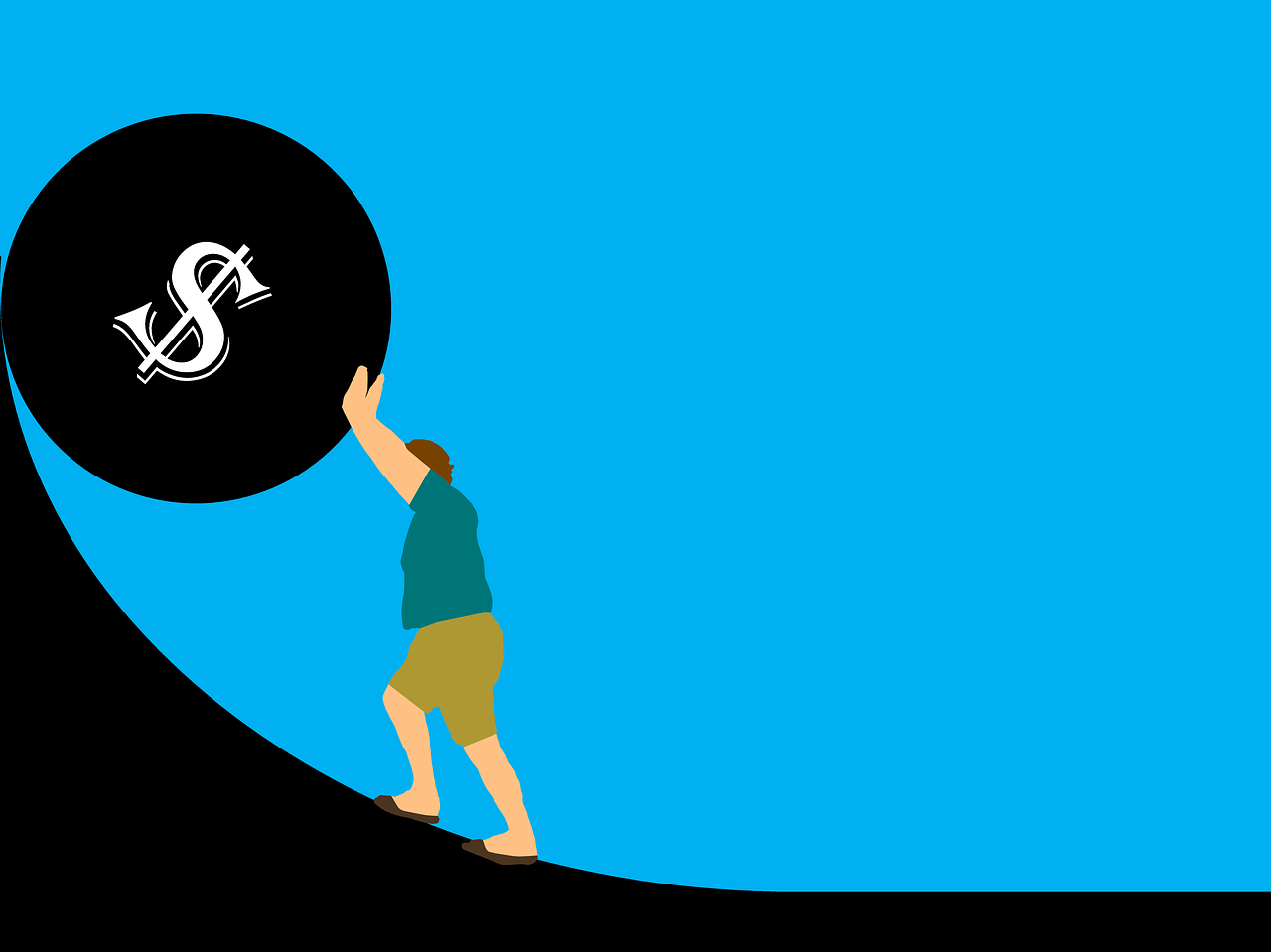
What is a mortgage and how to get it?
What is a mortgage, how many types are there, how to take into account all the risks, who owns the mortgaged property and how to pay interest?What is a mortgage, how many types are there, how to take into account all the risks, who owns the mortgaged property and how to pay interest?
Our goal is to figure out what to do before taking out a mortgage and deciding on it. A mortgage is a pledge of property. That is, a mortgage loan is money that you take from the bank with interest (loan).
As a guarantee that you will return the money, your property is your property: house, apartment or land. A mortgage is usually taken as a loan to buy a home. In this case, a mortgage is an apartment (house) purchased with money provided by the bank. While this is just one of the various types of mortgages, it is the most common one.
In Azerbaijan, mortgage usually refers to this type of mortgage loan. Other types of mortgages are also actively used in international practice. For example, a person can obtain a mortgage for a new home by pledging property that they already own. In addition, a mortgage can be obtained not only for real estate, but also for repairs, construction and other purposes.
A mortgage loan is formalized in one or two agreements: a loan agreement and a mortgage agreement on the transfer of real estate to a bank as collateral. Real estate is an object that is firmly attached to the ground and cannot be transported without damage. Real estate also includes government-registered aircraft and ships, domestic ships, and more.

What do you need to clarify before taking out a mortgage loan?
Usually, a large amount of money is taken on a mortgage for a long period, decades, and this is a rather serious and long-term commitment. Therefore, before taking out a mortgage, you must answer the following questions:
1. How much money should I pay for the first installment and how much should I borrow?
As a rule, when obtaining a mortgage, you must pay a portion of the cost, that is, the advance payment yourself. For example, 30% of the cost of an apartment will be provided by your funds, the remaining 70% will be provided by the bank.
2. How much of my earnings am I willing to give to the bank every month to repay the loan, and how long can I do it?
- Estimate your income and future expenses. If your loan payments exceed your annual income, you run the risk of not being able to repay the loan.
- Take your time, be vigilant and compare offers from different banks, carefully study the terms of the agreement.
- Make sure you understand each step. The subsequent remorse does not help.
All mortgage agreements must have a diagram showing the individual loan conditions for each client - in particular, the amount, currency, loan term, interest rate, amount of penalties, and other parameters.
The chart structure is the same for all banks and microfinance institutions. There are 16 cells in total, and none of them should be empty. General conditions such as the rights and obligations of the borrower and the lender are clearly stated in the contract.
If the amount of payments changes, the bank must send you an updated schedule (the delivery method is specified in the contract). Payment must be made according to the old schedule until a new one is purchased.
The bank cannot change the payment amount retroactively. The full cost of the loan with an annual interest rate and currency is indicated on the first page of the agreement. All your loan expenses are indicated here: principal and interest on the loan, as well as other payments that you must pay to the bank in accordance with the agreement.

3. How can I repay the loan?
The repayment of the mortgage consists of two parts: the principal and the interest on the loan.
Do not forget about other expenses: you will have to pay the state fee for state registration of mortgages and insurance of the mortgaged property.
The bank cannot charge fees for its services in its own interest. For example, consider an application for a loan.
The mortgage loan is repaid in differential or annuity payments. Take your time - these conditions will be explained.
Differential payment - every month you pay a certain part of the principal and, in addition, you pay interest on the balance of the debt. Every month the payment decreases and you spend less interest for the entire loan term than an annuity. However, in this case, the amount you pay at the beginning of the period will be more than the amount paid at the end.
Annuity payment - you pay an equal amount every month. Gradually, you close your main debt: its share in the annuity increases every month and, accordingly, the interest decreases for the next month. Budgeting with an annuity is more convenient.
The payment method is offered by the bank and is specified in the contract - therefore, carefully study the working conditions of different banks and choose the most suitable one for you. The bank must also provide a table with information on the amounts of repayment of principal and interest and the dates of repayment (or a scheme for determining them) and the total amount of payments for the term of the agreement.
Examples of calculating differential and annuity payments
Calculations are approximate.
The exact number of days in the percentage period and calendar year must be known for accurate calculation.
For example, you get a mortgage loan in the amount of 50,000 manats for 15 years (180 months) at 12% per annum. The payment schedule for the first year will be as follows:
Differential payment (in manats)
| Payment number | Amount to pay | Basic payment | Percent | Remaining debt |
| 1 | 777 | 277 | 500 | 49,722 |
| 2 | 775 | 277 | 497 | 49,444 |
| 3 | 772 | 277 | 494 | 49,166 |
| 4 | 769 | 277 | 491 | 48,888 |
| 5 | 766 | 277 | 488 | 48,611 |
| 6 | 763 | 277 | 486 | 48,333 |
| 7 | 761 | 277 | 483 | 48,055 |
| 8 | 758 | 277 | 480 | 47,777 |
| 9 | 755 | 277 | 477 | 47,500 |
| 10 | 752 | 277 | 475 | 47,222 |
| 11 | 750 | 277 | 472 | 46,944 |
| 12 | 747 | 277 | 469 | 46,666 |
Note: by the end of the first year, the remaining debt will amount to 46,666 manats.
With a differentiated payment, the principal amount of the loan is usually repaid in equal installments (in this example: 50,000 manats / 180 months = 277 manats per month). Interest on the loan is calculated based on the remaining debt, and as the debt decreases, the payment amount decreases every month. That is, in the first month of the loan, interest is charged from 50,000 manats, next month - from 49,723 manats (50,000 manats - 277 manats) and so on.
Annuity payment (in manats)
| Payment number | Amount to pay | Basic payment | Percent | Remaining debt |
| 1 | 600 | 100 | 500 | 49,899 |
| 2 | 600 | 101 | 499 | 49,798 |
| 3 | 600 | 102 | 498 | 49,696 |
| 4 | 600 | 103 | 497 | 49,593 |
| 5 | 600 | 104 | 496 | 49,489 |
| 6 | 600 | 105 | 495 | 49,384 |
| 7 | 600 | 106 | 494 | 49,278 |
| 8 | 600 | 107 | 493 | 49,170 |
| 9 | 600 | 108 | 492 | 49,062 |
| 10 | 600 | 109 | 491 | 48,952 |
| 11 | 600 | 110 | 490 | 48,842 |
| 12 | 600 | 111 | 489 | 48,730 |
Note: By the end of the first year, the remaining debt will amount to 48,730 manats.
The same amount is paid in annuity every month (600 manats). At the beginning of the loan period, payments on the principal debt are much less, and at the end, on the contrary, more. You can watch a more detailed explanation of the annuity in the video below:
4. What are the risks and how can they be mitigated?
Let's touch on a few key risks.
Loss / decrease in income
You lost your job, your salary has been cut, your expenses have gone up - this can happen to anyone. Therefore, before applying to a bank for a mortgage, you should carefully assess your long-term financial position.
Rising inflation, volatile mortgage rates and the volatility of the market indicators that these rates depend on can also affect your ability to repay your loan. It is impossible to predict everything. But you can create a financial cushion of 3-6 months of family income. This will help you avoid temporary financial difficulties or adapt to new circumstances.
Currency risks
Is your salary and mortgage in different currencies? If the exchange rate drops sharply, you will pay more. Therefore, it is worth taking a loan in the currency in which you receive income. Even if interest rates on loans in foreign currency are lower than on loans in manat. This recommendation is valid for all types of loans.

Loss or damage to the value of the pledged property
In times of crisis, house prices may fall. If you suddenly cannot pay the loan and are forced to sell the mortgaged property, the income may not be enough to pay off the loan. That is, there is an opportunity to be left both without property and in debt to the bank.
The most dangerous thing is that something can happen to the apartment itself, for example, a fire. Not only will you lose your home - the bank may also require you to pay off your entire loan ahead of schedule. Because in this case, the bank will have no guarantee that it will return its money.
The only way to protect yourself from these risks is through insurance. Therefore, insurance is an important condition for a mortgage loan in all cases.
5. What can be insured?
Banks usually insist on several types of insurance:
Mortgage insurance
By law, unless otherwise provided by the mortgage agreement, you must insure the property at your own expense in the amount of full value in favor of the lender (bank). If you have made a down payment, the property is insured for the minimum loan amount.
Life and health insurance
The bank wants to make sure that someone will pay off the loan, even if you have a job. Therefore, borrowers are often offered accident insurance. Then, in the event of a serious illness or death of the borrower, the insurer will repay the loan in part or in full. This is voluntary insurance, but if you refuse, the bank may raise the interest rate on your mortgage or not lend at all.
Financial risk insurance
The Bank is entitled to insure financial risk of losses if the proceeds from the sale of the pledged property are insufficient to repay the loan. However, banks do not always exercise this right.
How to get a mortgage loan?
If the questions in the previous section did not cause any difficulties, you have assessed all the risks, and if you know exactly how to act in case of problems with income, we can proceed with obtaining a mortgage loan.
1. Bank selection
Compare offers from different banks. Consider not only your mortgage interest rate, but other expenses such as insurance payments and independent appraisal services. Find out how convenient payments are for you, how you can make them, whether the bank has a network of branches and ATMs, whether it is located near your home or business. Indicate how much you can withdraw, required documents and loan term. Your property may not be enough for a mortgage, and the bank will require a surety from you.
2. Property selection
This stage usually takes the longest. If the process continues, banks will have to pay interest on the loan, minimum down payment, maximum loan amount, payment rules, etc. Dates may change. The interest rate on a mortgage loan depends on many conditions, primarily inflation and the key interest rate of the Central Bank. In the past, banks could provide mortgage loans without a down payment, but now they don't. The more advance payments, the less risk the bank has. If you have saved at least 10-15% of your property value, you will probably continue to repay your loan in a disciplined manner. It is possible that banks will continue to increase the minimum down payment in the future.
Buying an apartment in a new residential complex
Some banks provide mortgage loans for the purchase of apartments in buildings under construction. In this case, in most cases, a pledge of another residential area is required, the construction of which has been completed and the ownership is registered. Sometimes a 'Housing Certificate' is accepted as collateral, and the mortgage agreement is concluded until you obtain ownership of the unfinished apartment you want to buy. After obtaining ownership of the apartment, the mortgage itself changes, and the apartment itself is formalized as a mortgage and a new mortgage agreement is concluded.
3. Preparation of documents
List of documents required by the standard:
- Spouse's identity card,
- Marriage certificate or death certificate of spouse (if any),
- Certificate of residence,
- Mortgage loan application,
- A copy of the work book or employment contract, as well as a certificate of income
- Expertise certificate, extract, cadastral and technical passports,
- The seller's ID and documents proving the title to the property.
The bank may require other documents. A complete list should be provided to you in advance.
4. Registration
After the documents are collected, they are accepted by the bank for verification. In most cases, you can send copies of documents by email and not waste time visiting the office. After checking all the information by bank specialists, the date of the transaction is agreed.
You just need to come to the bank and sign a contract. Insurance must be obtained before obtaining a loan - at least for a mortgage. If you decide to insure yourself apart from an accident, the interest rate on the loan will be lower (or expected, depending on the bank). After that, a sales contract with the seller and an agreement with the bank are concluded. Sometimes banks offer two contracts at the same time: a loan and a mortgage.
5. Settlement with the seller
As a result, a sales contract is concluded with the seller. In the case of a mortgage, this is also done through a bank - using a bank account, letter of credit, or escrow account. Regardless of the method of settlement, the bank ensures the reliability of the transaction. The seller will receive the money only after registering the title to you.
What to do after receiving a mortgage?
1. What can I do with the apartment?
Unless otherwise provided by the agreement, the mortgaged apartment cannot be sold, donated or exchanged without the consent of the bank. At the same time, you can rent such an apartment without the consent of the bank, unless otherwise provided by the contract. You can bequeath your property, but the new owner of the mortgaged apartment also assumes all the related obligations.
2. Is it possible to repay the loan ahead of schedule?
You can fully or partially repay the loan by notifying the bank at least 30 days in advance. A shorter period may be specified in the contract. In case of early payment, interest is charged only for the loan term. Even if you follow a payment schedule, the bank may require you to repay the loan early in the following cases:
- If at the time of the conclusion of the contract you have not knowingly informed others that you own (or expect) possession of the pledged property;
- In case of violation of the rules for the use of property: in the event of illegal repairs or creating a risk of real damage;
- If the collateral property is not insured;





